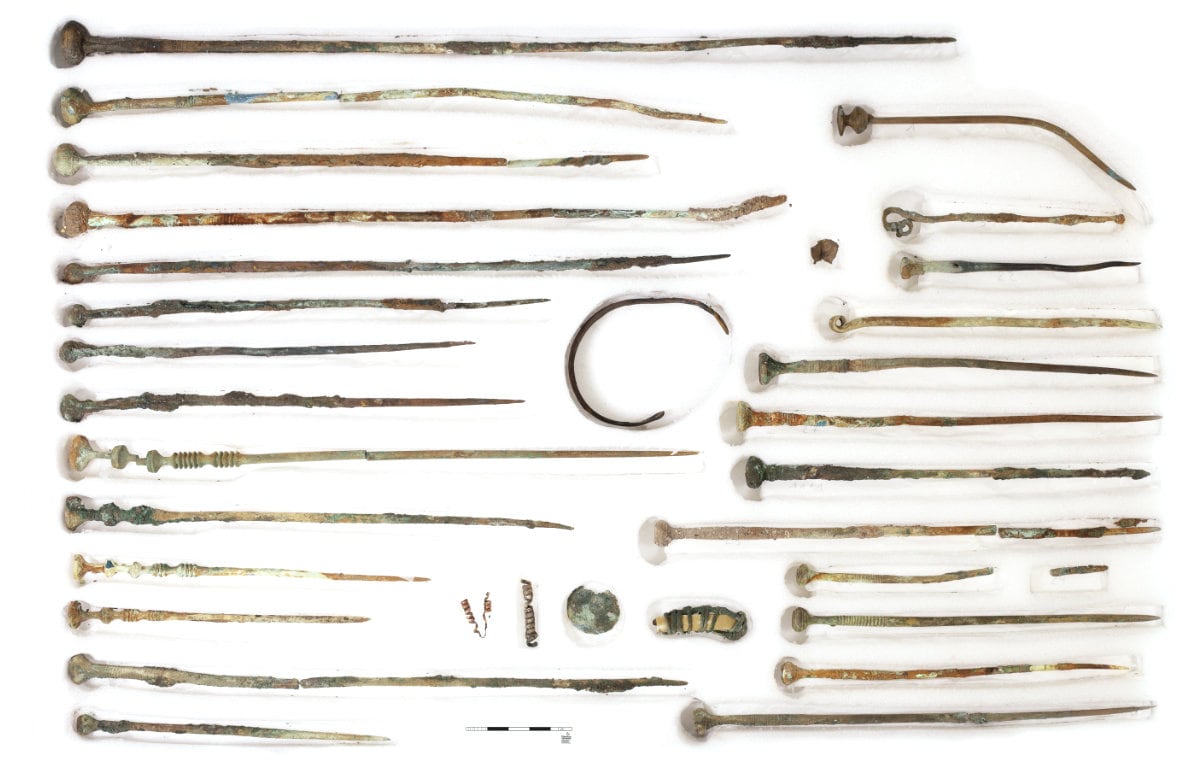Moc pěkný čtení 
A well-preserved well with ritual gifts from the Bronze Age has been discovered in Bavaria
Categories: Nálezy nejenom s detektorem v západní Evropě
3,000 years ago, it was 5 metres deep. A Bronze Age well excavated by archaeologists this year in Germering, Upper Bavaria. Bronze and ceramic finds or artfully decorated jewellery at the bottom, together with the context of other nearby wells, suggest its ritual use.
Archaeologists have recovered 26 bronze clothes pins and more than 70 decorated ceramic vessels. The considerable quantity and high quality of the objects suggests that they did not fall into the well by accident, but were carefully lowered (not thrown) into it - probably as part of cult rituals. The ceramics are not simple everyday utensils, but finely crafted decorated precious bowls, cups and pots of Middle Bronze Age people between 1800 and 1200 BC.
In addition to the needles and pottery vessels, the research team also found a bracelet, two metal spirals, an animal tooth encased in metal as a jewelry blank, four amber beads, a bark vessel, a wooden ladle, and numerous botanical remains on the bottom: "Even today, fountains represent something magical for many people. They throw coins into the water in the hope that their wishes will come true. Today, we can no longer understand what motivated our ancestors to throw jewels and other valuable gifts into the well 3,000 years ago. It is suggested that they were intended as offerings for a good harvest," said chief conservator Prof. Mathias Pfeil, head of the Bavarian State Heritage Office.
In any case, this well is fundamentally different from the others in the seven-hectare excavation area. More than 70 wells were dug here from the Bronze Age to the early Middle Ages. They belonged to settlements from different eras, as can still be seen today in the floor plans of the houses and the waste pits: 'Wells were used to supply water to settlements. The depth of this one shows that it was used at a time when the water table had dropped considerably, indicating a long drought and certainly a poor harvest. This is perhaps why the people who lived here at the time sacrificed part of their property to the gods to this particular well," points out Marcus Guckenbiehl, Germering's urban archaeologist and archivist.
"It is extremely rare for a well to survive in this condition for more than 3,000 years. Its wooden walls are completely preserved at the bottom and are still partially damp from the groundwater. This also explains the good condition of the organic finds, which are now being examined more closely. We hope that they will give us more information about the daily life of the settlers at that time," adds Dr. Jochen Haberstroh, the responsible archaeologist at the Bavarian State Office for the Preservation of Monuments.
The urban area of Germering, which is well cared for archaeologically, has regularly provided unusual artefacts for research into prehistory and early history in Bavaria for decades. Since the beginning of 2021, archaeologists have been working in advance on construction work for a mail-order distribution center at the site of the well discovery. The site is one of the largest area excavations of the past year in Bavaria.
Scientists were able to document around 13,500 archaeological finds here, mainly from the Bronze Age and early Middle Ages. Some of the finds are currently being examined and conserved by the Bavarian State Heritage Office. Once the subsequent restoration work is completed, it is expected that they will be made available to science and the public at the end of the year in the Germering Municipal Museum.
Roman Nemec
Sources: archaeologie-online.de, wiessenshaft.de

Bottom and remains of the wooden lining of the well

wooden ladle

amber beads

complete

Metal wire-wrapped tooth for hanging from the neck
The article is included in categories:



